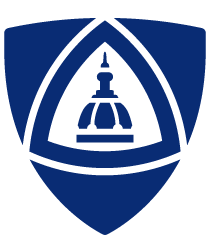
The Nobel Prizes are five separate prizes that, according to Alfred Nobel's will of 1895, are awarded to "those who, during the preceding year, have conferred the greatest benefit to Mankind." Alfred Nobel was a Swedish chemist, engineer, and industrialist most famously known for the invention of dynamite. He died in 1896. In his will, he bequeathed all of his "remaining realisable assets" to be used to establish five prizes which became known as "Nobel Prizes." Nobel Prizes were first awarded in 1901.

The Nobel Prize in Physiology or Medicine is awarded yearly by the Nobel Assembly at the Karolinska Institute for outstanding discoveries in physiology or medicine. The Nobel Prize is not a single prize, but five separate prizes that, according to Alfred Nobel's 1895 will, are awarded "to those who, during the preceding year, have conferred the greatest benefit to humankind". Nobel Prizes are awarded in the fields of Physics, Chemistry, Physiology or Medicine, Literature, and Peace.

Frederick Sanger was an English biochemist who twice won the Nobel Prize in Chemistry. He is one of only two people to have done so in the same category, and the fourth person with two Nobel Prizes. In 1958, he was awarded a Nobel Prize in Chemistry "for his work on the structure of proteins, especially that of insulin". In 1980, Walter Gilbert and Sanger shared half of the chemistry prize "for their contributions concerning the determination of base sequences in nucleic acids".

The Karolinska Institute is a research-led medical university in Solna within the Stockholm urban area of Sweden. The Karolinska Institute is consistently ranked amongst the world's best medical schools, ranking 6th worldwide for medicine in 2021. The Nobel Assembly at the Karolinska Institute awards the Nobel Prize in Physiology or Medicine. The assembly consists of fifty professors from various medical disciplines at the university. The current rector of Karolinska Institute is Ole Petter Ottersen, who took office in August 2017.

Sir Henry Hallett Dale was an English pharmacologist and physiologist. For his study of acetylcholine as agent in the chemical transmission of nerve pulses (neurotransmission) he shared the 1936 Nobel Prize in Physiology or Medicine with Otto Loewi.

George Herbert Hitchings was an American doctor who shared the 1988 Nobel Prize in Physiology or Medicine with Sir James Black and Gertrude Elion "for their discoveries of important principles for drug treatment", Hitchings specifically for his work on chemotherapy.

Sir Martin John Evans is an English biologist who, with Matthew Kaufman, was the first to culture mice embryonic stem cells and cultivate them in a laboratory in 1981. He is also known, along with Mario Capecchi and Oliver Smithies, for his work in the development of the knockout mouse and the related technology of gene targeting, a method of using embryonic stem cells to create specific gene modifications in mice. In 2007, the three shared the Nobel Prize in Physiology or Medicine in recognition of their discovery and contribution to the efforts to develop new treatments for illnesses in humans.

The Johns Hopkins University School of Medicine (JHUSOM), located in Baltimore, Maryland, is the research-intensive medical school of Johns Hopkins University. Founded in 1893, the School of Medicine shares a campus with the Johns Hopkins Hospital and Johns Hopkins Children's Center, established in 1889. Johns Hopkins has consistently ranked among the top medical schools in the United States, in terms of the number of research grants awarded by the National Institutes of Health, among other measures.
The Louisa Gross Horwitz Prize for Biology or Biochemistry is an annual prize awarded by Columbia University to a researcher or group of researchers who have made an outstanding contribution in basic research in the fields of biology or biochemistry.
The Jane Coffin Childs Memorial Fund for Medical Research, established in 1937, awards the "Jane Coffin Childs Postdoctoral Fellowship" for research in the medical and related sciences bearing on cancer.
The United States-Israel Binational Science Foundation (BSF) is a grant-awarding institution that promotes collaborative research in a wide range of basic and applied scientific disciplines, established in 1972 by an agreement between the governments of the United States and Israel. Numerous scientists participating in BSF programs have won prestigious awards such as the Nobel, Lasker and Wolf prizes. The Foundation grant recipients include 43 Nobel Prize laureates, 19 winners of the Lasker-DeBakey Clinical Medical Research Award, and 38 recipients of the Wolf Prize.

Shinya Yamanaka is a Japanese stem cell researcher, winner of the Nobel Prize. He serves as the director of Center for iPS Cell Research and Application and a professor at the Institute for Frontier Medical Sciences at Kyoto University; as a senior investigator at the UCSF-affiliated Gladstone Institutes in San Francisco, California; and as a professor of anatomy at University of California, San Francisco (UCSF). Yamanaka is also a past president of the International Society for Stem Cell Research (ISSCR).

Sir Peter John Ratcliffe, FRS, FMedSci is a British Nobel Laureate physician-scientist who is trained as a nephrologist. He was a practising clinician at the John Radcliffe Hospital, Oxford and Nuffield Professor of Clinical Medicine and head of the Nuffield Department of Clinical Medicine at the University of Oxford from 2004 to 2016. He has been a Fellow of Magdalen College, Oxford since 2004. In 2016 he became Clinical Research Director at the Francis Crick Institute, retaining a position at Oxford as member of the Ludwig Institute of Cancer Research and Director of the Target Discovery Institute, University of Oxford.

Elizabeth Matilda Tansey is an Emerita Professor of the history of medicine and former neurochemist, best known for her role in the Wellcome Trust's witness seminars. She previously worked at Queen Mary University of London (QMUL).










